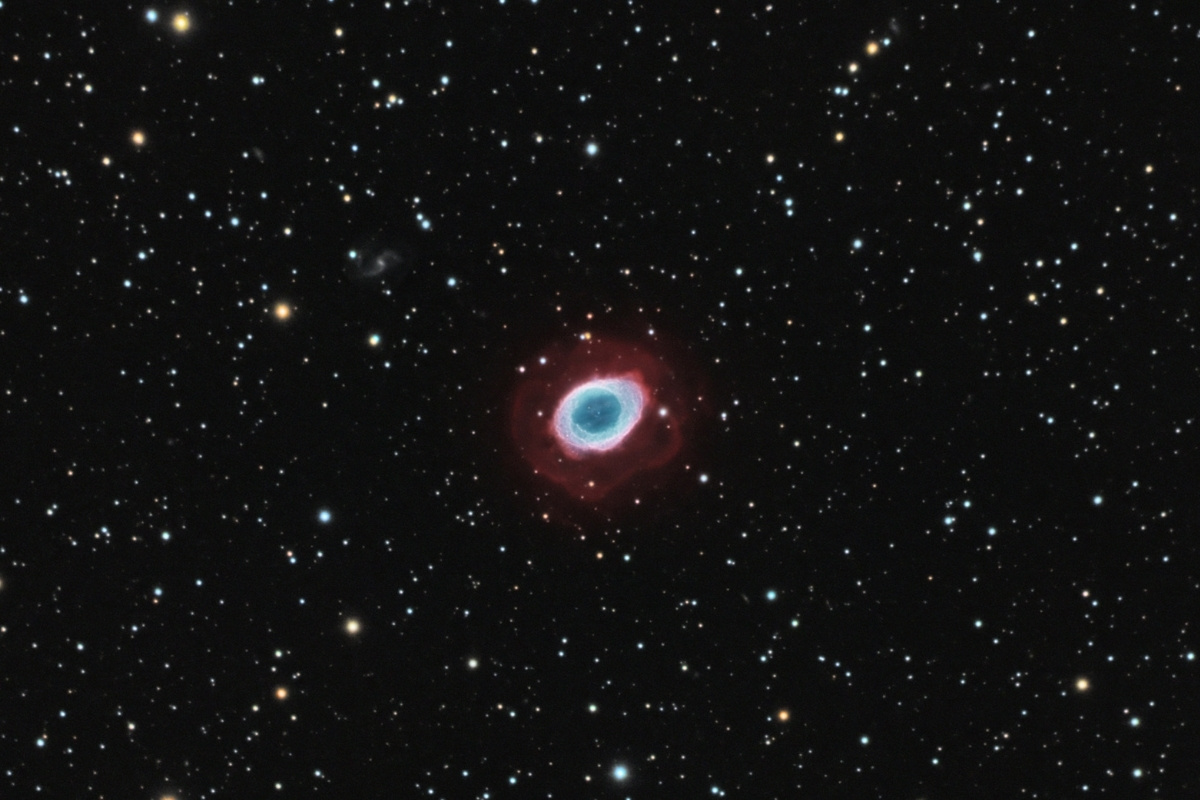
M57, also known as the Ring Nebula, is one of the most famous planetary nebulae in the night sky. Located in the constellation Lyra, this celestial wonder has fascinated astronomers and stargazers for centuries. But what makes M57 so special? It's a glowing shell of ionized gas expelled by a dying star, creating a stunning ring-like appearance. This nebula is about 2,300 light-years away from Earth and spans roughly one light-year across. Observing M57 can be a thrilling experience, especially through a telescope, where its intricate details come to life. Ready to learn more? Here are 20 intriguing facts about M57 that will leave you starstruck!
What is M57?
The Ring Nebula, also known as M57, is one of the most famous planetary nebulae in the night sky. Located in the constellation Lyra, it has fascinated astronomers and stargazers for centuries. Here are some intriguing facts about this celestial wonder.
-
M57 was discovered by French astronomer Antoine Darquier de Pellepoix in 1779. He described it as a "faint nebula."
-
Charles Messier, a French astronomer, added M57 to his catalog of nebulae and star clusters in the same year. This catalog is now known as the Messier Catalog.
Location and Distance
Understanding where M57 is located and how far it is from Earth can give us a better appreciation of its scale and beauty.
-
M57 is situated approximately 2,300 light-years away from Earth. This means the light we see from it today started its journey around the time of the Roman Empire.
-
The nebula is located in the constellation Lyra, which is easily visible in the summer sky of the Northern Hemisphere.
-
M57 lies about 40% of the way from the bright star Vega to the star Sheliak in the constellation Lyra.
Structure and Appearance
The Ring Nebula's unique structure and appearance make it a favorite target for both amateur and professional astronomers.
-
M57 appears as a ring because we are looking at it from a specific angle. It is actually a three-dimensional structure shaped like a doughnut or torus.
-
The nebula's ring is composed of ionized gas expelled from a dying star at its center.
-
The central star of M57 is a white dwarf, the remnant of a star that has shed its outer layers.
-
The ring's colors are due to different gases emitting light at various wavelengths. Hydrogen emits red light, while oxygen emits greenish-blue light.
Observing M57
Observing M57 can be a thrilling experience for both novice and seasoned astronomers.
-
M57 can be seen with small telescopes, appearing as a small, faint ring. Larger telescopes reveal more details, including the central star.
-
The nebula has an apparent magnitude of 8.8, making it visible under dark skies with binoculars or a small telescope.
-
The best time to observe M57 is during the summer months when Lyra is high in the sky.
Scientific Significance
M57 is not just a pretty sight; it also holds significant scientific value.
-
Studying M57 helps astronomers understand the late stages of stellar evolution, particularly how stars like our Sun end their lives.
-
The nebula's expanding shell of gas provides clues about the processes that occur when a star sheds its outer layers.
-
M57's central white dwarf offers insights into the future of our Sun, which will eventually become a white dwarf after it exhausts its nuclear fuel.
Fun Facts
Here are some additional fun facts about M57 that add to its allure.
-
The Ring Nebula is often used as a reference object for calibrating telescopes and testing new astronomical instruments.
-
M57 has been featured in numerous astronomy books, documentaries, and even science fiction stories due to its iconic appearance.
-
The nebula's ring is expanding at a rate of about 1 arcsecond per century, which helps astronomers estimate its age.
-
M57 is part of the Caldwell Catalog, a list of 109 bright star clusters, nebulae, and galaxies for amateur astronomers.
-
The Ring Nebula's beauty and scientific importance make it a popular target for astrophotographers, who capture stunning images of this celestial gem.
The Final Countdown
M57, or the Ring Nebula, is a cosmic wonder that continues to captivate astronomers and stargazers alike. Its unique doughnut shape, vibrant colors, and rich history make it a standout in the night sky. Located in the Lyra constellation, this nebula is a stellar remnant, offering a glimpse into the life cycle of stars. With its central white dwarf and expanding gas shell, M57 provides valuable insights into stellar evolution.
Whether you're an amateur astronomer or a seasoned stargazer, M57 is a must-see. Its beauty and scientific significance make it a fascinating subject for observation and study. So next time you're out under the stars, take a moment to locate the Ring Nebula. You'll be looking at a piece of the universe's history, a testament to the ever-changing cosmos. Happy stargazing!
Was this page helpful?
Our commitment to delivering trustworthy and engaging content is at the heart of what we do. Each fact on our site is contributed by real users like you, bringing a wealth of diverse insights and information. To ensure the highest standards of accuracy and reliability, our dedicated editors meticulously review each submission. This process guarantees that the facts we share are not only fascinating but also credible. Trust in our commitment to quality and authenticity as you explore and learn with us.
